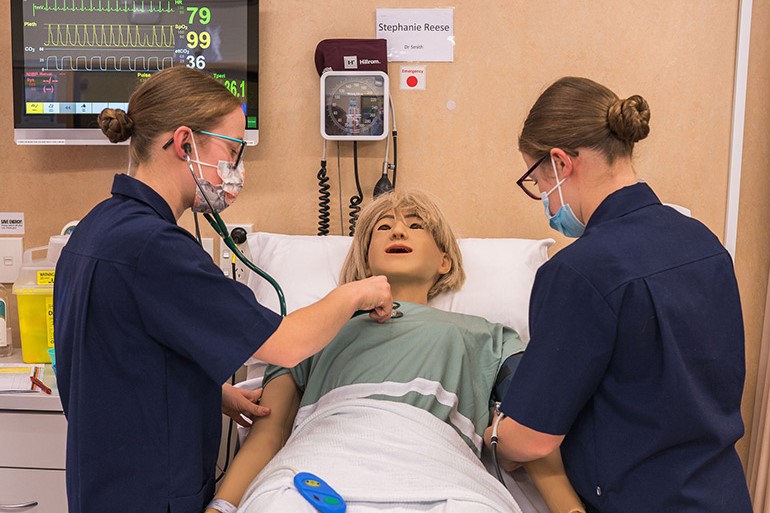Kaiāwhina Health Workforce – Kaiāwhina Hauora
With 11.6% of the Manawatū-Whanganui workforce being employed in Health Care and Social Assistance, this sector holds the largest segment of our kaimahi compared to any other.
On this page
Manawatū-Whanganui Regional Economic Profile, 2021(external link) – Infometrics
The sector remains under extreme stress due to increasing pressures and demands, such as technology advancements, COVID-19, an aging population and increasing complexity of health conditions within many whānau and communities.
The Health Care and Social Assistance sector is also predicted to grow by over 25% over the next 10 years, with the biggest growth area predicted to be within Residential Care Services, specifically Aged Care Services.
The Health Care and Social Assistance workforce is typically associated with registered professionals such as doctors, nurses and midwives. However, there is immense opportunity to alleviate some of the stressors on this sector by investing in and upskilling our unregulated, kaiāwhina workforce. Comprised of occupations such as health care assistants, aged care workers, disability support workers, technicians, and orderlies, our kaiāwhina workforce is equipped with the foundational skills and knowledge needed to keep this sector functioning.
The health sector is also facing transformational change, with the establishment of Health NZ and the Māori Health Authority in July 2022. This period of change requires productive conversations that include whānau, hapū and iwi. We honour authentic partnerships that draw out insights around skills improvement and training in our communities. Insights were gathered through engagement with our local kaiāwhina workforce and those directly connected to it. Key messages that emerged were:
- Experienced kaiāwhina are in high However, there is limited training provision to ensure that regular upskilling takes place. This is especially true in the smaller districts where access is further limited by fewer local courses, requiring travel to larger cities.
- Iwi Healthcare providers are at the cutting edge of successful delivery of primary health care services. Much of this can be attributed to their application of a te ao Māori skillset within their workforce. This approach to training and professional development has the potential to add value across all health services.
- There are great existing programmes, such as Hauroa (Māori Health) training, which often require employers to release their kaimahi for extended periods. This is not always possible but could be partially mitigated by having more localised provisions.
- Solutions by the community, for the community, are important. Training should align with the requirements of the community and address the needs of Māori.
- There is concern around the sustainability of kaiāwhina mahi related to the COVID-19 response; there will be less need for roles such as COVID-19 testers, vaccinators, and contact tracers. Consequently, this workforce is going to need to pivot and be supported to upskill in other areas.


